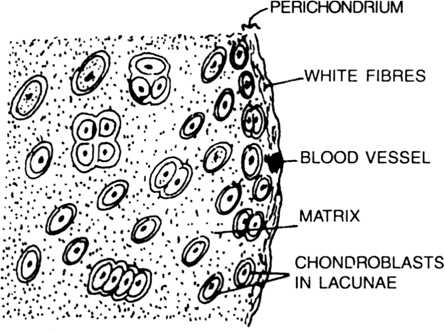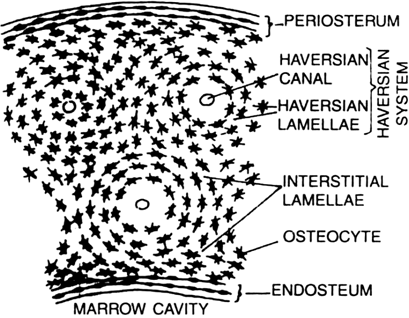Describe the structure of cartilage and bone.
Cartilage : It is a solid but semi-rigid and flexible connective tissue. It has large, bluntly angular cartilage cells called chondriocytes. They occur in clusters of 2 or 3 in small spaces (lacunae) scattered in the matrix. The cartilage is bounded externally by a sheath called perichondrium.
Hyaline cartilage is found in tracheal and broncheal rings, fibro-cartilage is present in intervertebral discs and pubic symphysis, elastic cartilage is found in pinna, tip of nose and eustachin tube.
T.S. of Cartilage.
Bone : Bone is solid, rigid and strong connective tissue. Its matrix become hard due to the deposition of salts of calcium and phosphorus. Osteocytes or bone cells are present in irregular spaces—lacunae in the matrix, interconnected by fine canals called canaliculi. The matrix occurs as layers—the lamellae arranged in concentric rings around narrow longitudinal cavities called Haversian canals. These canal carries blood vessels and nerves.
The haversian canals are inter-connected by transverse channels called Volkman’s canals. The long bones have central cavity filled with bone marrow and is called marrow cavity. The bone marrow is formed of blood vessels, nerve fibres and adipose tissue. Blood cells are produced in bone marrow. The bone is bounded externally by a tough sheath called periosteum.

T.S. of bone.



